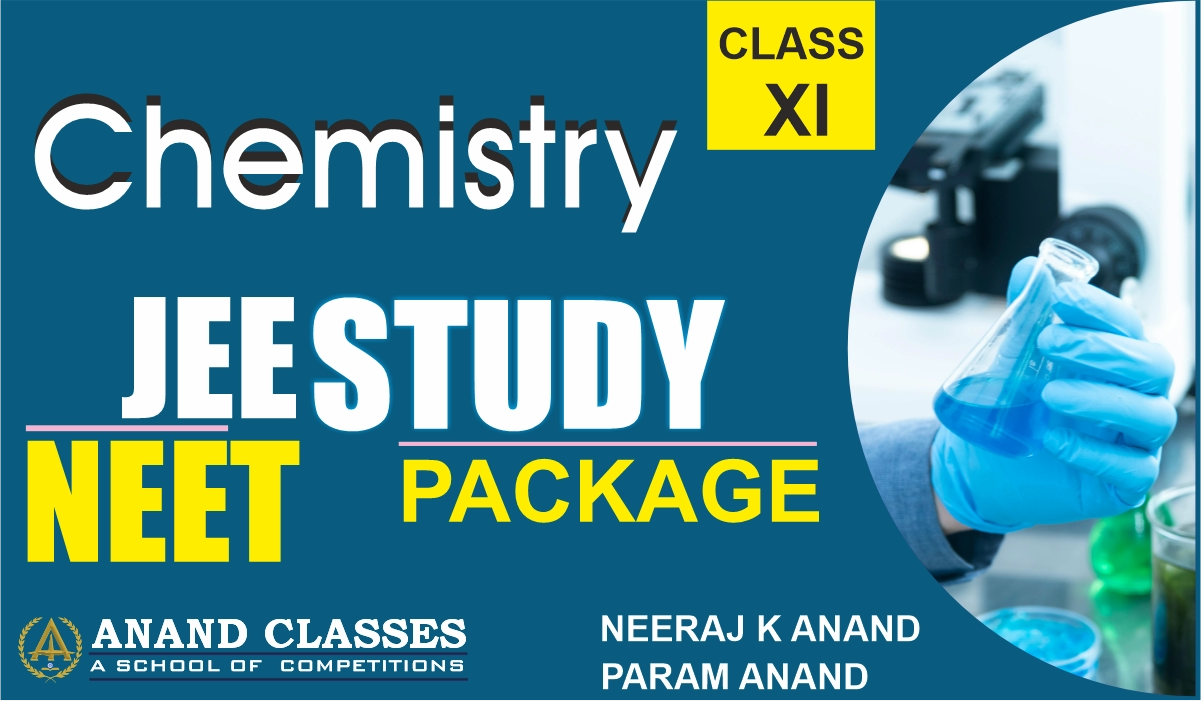-- Select a Chapter Content --
Concentration Units: ppm, Mass Percent, Volume Percent, Formulas, Examples for Class 11 Chemistry
Molarity and Formality, Formulas, Difference, Temperature Dependent, Examples for Class 11 Chemistry
Convert Molarity into Formality Formula, Relation Between Them, Condition Molarity Equals Formality
Normality Formula, Equivalent Mass Calculation and Relation With Molar Mass, Examples
Relation Between Normality and Molarity, Formula, Differences, Examples
What is the effect of Temperature on Normality, Why Normality and Molarity vary with Temperature
Molality Definition, Formula, MCQs, Solved Examples, Practice Problems, Temperature Independent
1 Molar or 1 Molal, Which is More Concentrated and Why ? With Practical Numerical Example
Mole Fraction: Definition, Formula, Properties, Solved Examples, MCQs
Molarity and Dilution Equation M1 V1 = M2 V2 Solved Examples, MCQs & Concepts for JEE/NEET/CBSE
M1V1+M2V2=M3V3/Molarity Equation for mixing of solutions of same substance
N1 x V1 = N2 x V2 Normality Neutralisation Equation, Derivation, Solved Examples
Normality Equation for Mixing Acid and Base, Formulas, Solved Examples
Laws of Chemical Combination: Definitions, Examples & PDF for JEE, NEET, CBSE Class 11
Mole Concept: Atomic and Molar Mass, Formula, Examples, Worksheet, for JEE/NEET/Class 11 CBSE
Empirical Formula and Molecular Formula for JEE/NEET/CBSE, Examples, Worksheet, Difference between them
Importance of Chemistry: Applications, Role in Daily Life and Future Scope/JEE/NEET/Class 11 Notes
Nature of Matter (Detailed Explanation) JEE/NEET/Class 11 Notes, MCQS, Quiz
Classification of Matter: Homogeneous and Heterogeneous Mixture for Class 11/JEE/NEET
Physical and Chemical Properties:JEE/NEET/Class 11 CBSE Notes
Dalton’s Atomic Theory Explained : Postulates, Limitations & Importance (Class 11, JEE, NEET)
Atomic and Molecular Masses, Define 1 amu: Q&A, Examples, Formulas / JEE & NEET CBSE
Limiting Reagent : Examples & MCQs with Solutions for JEE, NEET, Class 11
NCERT Solutions-Some Basic Concepts of Chemistry for Class 11
NCERT Exemplar Solutions-Basic Concepts of Chemistry for Class 11
Dalton’s Atomic Theory Explained: Origin, Postulates, and Limitations | Class 11 Chemistry, JEE & NEET
CBSE Class 11 Chemistry Syllabus with Marking Scheme PDF for Download
Oxoacids of Halogens-Properties, Structure,Hypochlorous Acid, Chlorous Acid, Perchloric Acid, Interhalogen Compounds, FAQs
Allotropes of Phosphorus, White Phosphorus, Red Phosphorus , Black Phosphorus, Phosphorus Trichloride (PCl3), Phosphorus Pentachloride (PCl5)
Oxides of Nitrogen-Preparation, Properties, Structure, Uses of Nitrogen Dioxide (NO2), Nitric Acid (HNO3), Nitrous Oxide (N2O), Nitric oxide (NO), FAQs
Ammonia(NH3)-Structure, Physical & Chemical Properties, Preparation, Uses, FAQs
Dinitrogen(N2)-Preparation, Reactions, Properties, Uses, Nitrogen Cycle, Occurence, FAQs
Nitrogen Family-Group 15 Elements, Periodic Trends, Physical & Chemical Properties, Anomalous Properties of Nitrogen
Phosphine(PH3)-Structure, Preparation, Properties, Uses, FAQs
Phosphorus Halides-Structure, Properties, Uses, Effects of Phosphorus Trichloride(PCl3) & Phosphorus Pentachloride (PCl5)
Hydrogen Chloride(HCl)-Preparation, Physical & Chemical Properties, Synthesis, Harmfull Effects, Uses, FAQS
Chlorine(Cl)-Structure, Physical & Chemical Properties, Isotopes, Uses, and FAQs
Group 17 Elements(Halogens)-Electronic Configuration, Oxidation State, Physical & Chemical Properties, Characteristics, Uses, FAQs
Sulfuric Acid (H2SO4)–Structure, Formula, Contact Process & Lead Chamber Process for Manufacturing of Sulfuric Acid, Molecular Mass & Uses, FAQs
Oxoacids of Sulphur-Sulphuric acid, Sulphurous acid, Peroxodisulphuric acid, Pyrosulphuric Acid, Thiosulphuric acid, Dithionic acid, Properties, Uses, FAQs
Sulphur Dioxide(SO2)-Structure, Preparation, Properties, Uses
Allotropes of Sulphur-Rhombic sulphur (α-sulphur), Monoclinic sulphur (β-sulphur), Colloidal Sulphur, Physical & Chemical Properties of Sulphur
Ozone-Preparation, Properties, Uses, Ozone Layer Depletion Effects, FAQs
Simple Oxides-Types, Acidic Basic Neutral Oxides, Examples, FAQs
Dioxygen(O2)-Physical & Chemical Properties, Preparation, Laboratory & Industrial Preparation, Uses, FAQs
Group 16 Elements(Oxygen family)-Chalcogens, Isolation, Physical & Chemical Properties
Oxoacids of Phosphorus-Phosphorus acid, Phosphoric acid, Hypophosphoric Acid, Pyrophosphoric Acid, Orthophosphoric Acid, Structures, Properties, Uses, FAQS
d-Block Elements(Transition Elements)-Position of Elements in the Periodic Table, Properties, FAQs
Actinide Series-Physical & Chemical Properties, Actinide Contraction, Coloured Ions, Ionization Enthalpies, Oxidation State, Formation of Complexes, FAQs
Lanthanides Series(f-Block Elements)-Definition, Configuration, Properties, Lanthanide Contraction, Oxidation State, Chemical Reactivity, Formation of Coloured Ions
General Properties of Transition Elements (d-block)-Oxidation State, Atomic Ionic Radii, Ionization Enthalpy, Metallic Radii and Densities, Boiling and Melting Points, Metallic Nature, Chemical Reactivity
Electronic Configuration of the d-block Elements, Properties, Atomic and Ionic Radiii of d Block Element
p-Block Elements-Assertion & Reason Questions for Class 12 Chemistry
P-Block Elements MCQs With Answers For Class 12 Chemistry JEE NEET
p-Block Elements MCQs with Answers Class 12 Chemistry
P Block Elements MCQ Questions – Practice Questions of P Block Elements MCQ Chemistry with Answer & Explanations
p-Block Elements:NCERT Exemplar Solutions for Class 12 Chemistry, Important Questions
p-Block Elements:NCERT Solutions for Class 12 Chemistry, Important Questions
Group 18(Noble or Inert Gas Elements)-Characteristics, Physical & Chemical Properties, Trends, Characteristics, FAQs
Interhalogen Compounds, Properties, Preparation, Uses, FAQs
Applications of d and f-block Elements for Class 12 Chemistry Notes
What is Hydrogen Fuel Cell – Definition, Production, Advantages, Economy, Uses
NCERT Exemplar Class 11 Chemistry Solutions Chapter 7 – Equilibrium
NCERT Solutions-Equilibrium for Class 11 Chemistry
NCERT Exemplar Solutions-Thermodynamics for Class 11 Chemistry Chapter 6
NCERT Solutions-Thermodynamics for Class 11 Chemistry Chapter 6
NCERT Solutions-Chemical Bonding and Molecular Structure Class 11 Chemistry Chapter 4
NCERT Exemplar Solutions-Chemical Bonding and Molecular Structure Class 11 Chemistry Chapter 4
NCERT Exemplar Solutions-Classification of Elements and Periodicity in Properties for Class 11 Chemistry Chapter 3
NCERT Solutions-Classification of Elements and Periodicity in Properties for Class 11 Chemistry Chapter 3
NCERT Solutions-Structure of Atom for Class 11 Chemistry pdf Download Free
NCERT Exemplar Solutions-Structure of Atom for Class 11
Carcinogenic Substances- Harmful Effects | Cancer Causes
NCERT Solutions – Redox Reactions for Class 11 Chemistry | Anand Classes by Neeraj Anand
NCERT Exemplar Class 11 Chemistry Solutions – Redox Reactions
NCERT Solutions-Organic Chemistry Some Basic Principles and Techniques for Class 11
Hydrogen Peroxide – Structure, Formula, Reactions, Properties, Uses
Heavy Water – Uses, Properties, Types, Preparation, Reactions (D2O)
Properties Of Water – Physical & Chemical Properties | Class 11 Chemistry Notes
Hydrides-Types of Hydrides, Ionic, Covalent, Metallic Hydrides
Uses Of Hydrogen – Properties & its Reactions with FAQs
Hydrogen-Methods of Preparation, Isotopes, Types, Properties
Isotopes of Hydrogen-Plutonium, Deuterium, Tritium with Examples & FAQs
Hydrogen (H)-Discovery, Physical and Chemical Properties, Preparation, Uses with FAQs
Hydrogen Elements-Position Of Hydrogen In Periodic Table-Class 11 Chemistry Notes
NCERT Solutions-Hydrocarbons Organic Chemistry for Class 11
NCERT Exemplar Solutions-Organic Chemistry Some Basic Principles and Techniques for Class 11
Directive Influence of Functional Group | Substituted Benzene, Ortho-para-meta directing group
Friedel-Crafts Reaction – Mechanism of Alkylation and Acylation
Ozonolysis of Alkenes and Alkynes-Mechanism
Markovnikov’s Rule: Statement and Explanation with Examples & FAQs
Chemical Properties of Alkenes | Addition of Dihydrogen & Halogen
Methods of Preparation of Alkenes in the Laboratory | Mechanism
Physical Properties of Alkenes – Melting & Boiling Point, Polarity, Solubility
Hybridization of C2H4 (Ethene): Hybridization of Carbon in C2H4
Nomenclature of Alkanes, Alkenes and Alkynes – IUPAC Nomenclature of Alkanes, Alkenes and Alkynes
Alkene – Formula, Definition, Classification, Properties, Uses, Examples, FAQs
Pyrolysis of Alkanes Free Radical Mechanism Detailed Explanation
Physical & Chemical Properties of Alkanes with Examples | By Neeraj Anand | Anand Classes
Conformations of Ethane and Butane – Conformational Isomerism | Anand Classes by Neeraj Anand
Electrophilic Addition and Substitution Reactions of Alkenes with Examples, FAQs
Triple Bond in Alkynes-Structure & Uses of Alkynes
Physical & Chemical Properties Of Alkynes
Halogenation Reactions of Benzene-Definition, Mechanism, Importance, FAQs
Benzene Reactions – Sulphonation, Nitration, Halogenation, Electrophilic Substitution Reactions
Nitration-Types, Applications, Nitration of Benzene, Electrophilic Substitution Reaction between Benzene and Nitric Acid
Electrophilic Aromatic Substitution of Benzene with Mechanism and Examples
Benzene Physical and Chemical Properties, Question Answers, FAQs
Aromaticity-Definition, Example Benzene, Aromaticity Rules, FAQs
Benzene (C6H6)-Definition, Structure, Resonance, Aromaticity, Uses of Benzene (C6H6), Discovery
Aromatic Hydrocarbons-Definition, Examples, Properties, Uses, FAQs
Addition Reaction of Alkynes – Halogenation, Hydrogenation, Hydration, Hydrohalogenation of Addition Reaction of Alkynes FAQS
Acidity Of Alkynes – Acidity Of Terminal Alkynes
Preparation of Alkynes From Calcium Carbide and Vicinal Dihalides
Isomerism – Definition, Detailed Explanation, Types, Examples of Isomerism
S Block Elements – Physical & Chemical Properties, Periodic Trends, Configurations, Diagonal Relationship
NCERT Solutions: p-Block Elements for Class 11 Chemistry
Calcium And Magnesium-Biological Importance and Factors
Limestone: Calcium Carbonate (CaCO3)-Uses, Preparation, Properties, Formula & Structure
Calcium Oxide (CaO)-Preparation, Properties & Uses of Quicklime
Organic Uses Of Sodium And Potassium | Sodium Potassium Pump, FAQs
Sodium Bicarbonate (NaHCO3) – Structure, Properties, Uses,FAQs
Sodium Hydroxide(NaOH)-Structure, Properties, Uses, Health Hazards, FAQs
Sodium Chloride – Structure, Properties, and Uses of NaCl
Sodium Carbonate- Synthesis (Solvey Process), Uses, Structure, Formula & Properties
Group 14 Elements (Carbon Family) – Properties, Compounds, Behaviour, FAQs
Periodic Table Trends-Atomic and Ionic Radii, Ionisation Enthalpy-Class 11 Notes Study Material
Anomalous Periodic Properties of Second Period Elements – Class 11 Chemistry Notes Study Material
s Block Elements Electronic Configuration in Periods and Groups | Class 11 Chemistry Notes Study material
p Block Elements on Periodic Table – Introduction, Properties & Trends
Group 13 Elements (Boron Family)-Properties, Compounds, Behaviour
Silicon Compounds-Silicones, Silicates and Zeolites
Uses Of Oxides of Group 14 Elements (Carbon Group)
Physical And Chemical Properties Of Carbon | Chemistry
Allotropes of Carbon – Properties, Structure of Carbon Allotropes, Graphite, Diamond, Fullerenes
Carbon and its compounds-Definition, Catenation, Nature, Allotropy & FAQs
Acids and Bases-Bronsted Lowry Theory, Arrhenius Concept, Lewis Concept, Examples, Properties, Uses, Difference, FAQs
Aluminum-Atomic Mass, Electron Configuration, Chemical Properties, Uses, FAQs
Diborane- Structure, Preparation, Properties, Reactions, Uses, Applications
Boric Acid (H3BO3) Uses-Preparation, Properties, Structure, Medicine & Poison, Uses, FAQs
Borax-Chemical Formula(Sodium Borate), Structural Formula, Borax Reaction, Natural Sources of Borax, Uses
Boron Family-Elements, Configurations, Periodic trend, Physical & Chemical Properties, FAQs
NCERT Solutions: S Block Elements for Class 11 Chemistry
Acids, Bases, and Salts – Definition, Types, Properties, and Uses
Third Law of Thermodynamics – Entropy at Absolute Zero
Spontaneity in Thermodynamics – Spontaneous reaction & Gibbs Equation
Gibbs Energy Change – Standard Gibbs Free Energy, Equation, Example
State Functions in Thermodynamics – Definition, Examples, Types
Entropy-Meaning, Definition, Formula, Thermodynamic Relation
Enthalpy of formation, Combustion, Solution, Neutralisation, Hydration, Fusion, Vapourisation, Sublimation, Transition, Bond Enthalpy
Enthalpy Change of a Reaction-Thermodynamics Class 11 Chemistry Notes
Internal Energy as a State of System-Thermodynamics Class 11 Chemistry Notes
State Functions in Thermodynamics – Definition, Types and Examples
Enthalpy: Definition, Formula and Reactions-Thermodynamics Class 11 Chemistry Notes
Enthalpy: Definition, Formula and Reactions-Thermodynamics Class 11 Chemistry Notes
Thermodynamic State Variables and Equation of State
Thermodynamic State Variables and Equation of State
What are Thermodynamic Cycles? Carnot, Rankine, Otto, and Diesel
What are Thermodynamic Cycles? Carnot, Rankine, Otto, and Diesel
Third Law of Thermodynamics – Entropy at Absolute Zero
What is Spontaneity?-Definition, Types, Gibbs Energy for Spontaneous Process
Acids, Bases, and Salts – Definition, Types, Properties, and Uses
Ionic Equilibrium-Ostwald’s Dilution Law: Degree of Dissociation
Le Chatelier’s Principles – Effect of Change of Volume, Pressure, Temperature or Inert Gas on Equilibrium and Product Formation
Equilibrium Constant (Kc, Kp) Relation -Definition, Units, Applications, Formula, Reaction Quotient and Gibbs Free Energy
Law of Mass Action – Definition, Formula, Application, Relation Between Kc, Kp
Dynamic Equilibrium – Definition, Examples, Static vs Dynamic Equilibrium
Energy Change Due To Equilibrium |Physical & Chemical Equilibrium
Le-Chatelier’s Principle-Factors Affecting Chemical Equilibrium
What is the Relation between Equilibrium Constant, Reaction Quotient and Gibbs Energy?
Characteristics of Equilibrium Constant, Equilibrium Constant and Gibbs Free Energy
Difference between Homogeneous and Heterogeneous Equilibria-Class 11 Chemistry Notes
Law of Chemical Equilibrium and Equilibrium Constant-Effect of Temperature on Equilibrium Constant
Equilibrium in Chemical Processes-Dynamic Nature of Chemical Processes in Equilibrium
Define Equilibrium-Equilibrium in Physical Processes, Types, Characteristics of Equilibrium In Physical Processes
Gibbs Energy Change and Equilibrium-Effect of Temperature on spontaneity of a Process
Second Law Of Thermodynamics-Formula, Definition, Statements, Equations & FAQs
Sublimation-Phase Transition, Definition & Examples with FAQs
Standard Enthalpy of Formation & Combustion-Bond Dissociation Enthalpy
Hydrogen Bonding–Definition, Types, Effects and Properties
Molecular Orbital Theory(MOT)-Chemical Bonding Chemistry Class 11 Notes Study material
Hybridization-Definition, Types, Rules, Examples-Chemistry Class 11 Notes
Hybridization-Definition, Types, Rules, Examples-Chemistry Class 11 Notes
Valence Bond Theory(VBT): Postulates, Applications & Limitations
VSEPR Theory: Postulates, Limitations, Shape of Molecules & FAQs
Bond Order-Definition, Bond Angle, Bond Length, Bond Dissociation Energy, Magnetic Character
Ionic Bond: Electrovalent Bond, Definition, Formation & Examples
Ionic Bond: Electrovalent Bond, Definition, Formation & Examples
Chemical Bonds: Definition, Types, Lewis’s Theory, Kossel’s Theory Rules, Examples
Hydrogen Bonding-Properties, Effects, Types, Examples of Hydrogen Bonding
Hydrogen Bonding-Properties, Effects, Types, Examples of Hydrogen Bonding
Molecular Orbital Theory(MOT) Explanation, Bonding & Anti Bonding Molecular Orbitals
Molecular Orbital Theory(MOT) Explanation, Bonding & Anti Bonding Molecular Orbitals
Shapes of Orbitals-Shape of s, p, d, and f Orbitals-Chemistry Class 11 Notes
Hydrogen Bonding–Definition, Types, Effects and Properties
Thermodynamics-Laws Of Thermodynamics, Applications with Examples
Bond Dissociation Enthalpy-Definition, Detailed Explanation With Examples
Hess’s Law -Constant Heat Summation-Definition, Equation, Formula & Applications
Measurement Of Enthalpy-Comparison Enthalpy & Internal, Principle of Calorimeter
Specific Heat Capacity & Water-Units, Formula, Detailed Explanation with Examples
Heat Capacity-Definition & Equation with FAQs-Thermodynamics Class 11 Notes
Enthalpy-Definition, Endothermic Exothermic Reactions-Thermodynamics Chemistry Class 11 Notes Study Material
Second Law Of Thermodynamics Equation, Kelvin & Plank Statement
What is Internal Energy? – Definition, Formula, Equation & Examples with FAQs
First Law of Thermodynamics-Solved Examples, Limitations, FAQs, Class 11 Chemistry Notes Study Material
First Law of Thermodynamics – Equations, Limitations and Examples
Zeroth Law of Thermodynamics: Definition, Applications & FAQs
Zeroth Law of Thermodynamics: Definition, Applications & FAQs
State Functions in Thermodynamics-Definition, Examples, Types
Intensive and Extensive Properties – Definition, Examples with FAQs
Thermodynamics Laws,Systems,Properties,Processes Notes
Shapes of Orbitals-Shape of s, p, d, and f Orbitals-Chemistry Class 11 Notes
Nomenclature of Saturated Hydrocarbons – IUPAC Rules & Examples | Anand Classes by Neeraj Anand
Hyperconjugation | Electromeric Effect | Chemistry Class 11 Organic Notes Study Material
Resonance Effect or Mesomeric Effect with Types and Structure
Electromeric Effect – Definition, Detailed Explanation and Examples
Inductive Effect – Types of Inductive Effect, Applications, Stability
Inductive Effect – Types of Inductive Effect, Applications, Stability
IUPAC Nomenclature Of Organic Compounds – Definition, Methods, Types, Examples with FAQs
Organic Chemistry – Reagents, Field Effects, Stability, Bond Cleavage
Organic Chemistry – Reagents, Field Effects, Stability, Bond Cleavage
Qualitative Analysis of Organic Compounds-Detection of Carbon, Hydrogen, Nitrogen, Halogens, Sulphur, Phosphorus, Oxygen
What is Quantitative Analysis?-Estimation of Carbon and Hydrogen (Liebig’s method), Nitrogen (Dumas Method and Kjeldahl’s method), Sulphur, Halogens, Oxygen, Phosphorus
What is Quantitative Analysis?-Estimation of Carbon and Hydrogen (Liebig’s method), Nitrogen (Dumas Method and Kjeldahl’s method), Sulphur, Halogens, Oxygen, Phosphorus
Purification of Organic Compounds-Sublimation, Crystallization, Distillation, Fractional Distillation, Vacuum Distillation, Steam Distillation, Differential Extraction, Chromatography
Purification of Organic Compounds-Sublimation, Crystallization, Distillation, Fractional Distillation, Vacuum Distillation, Steam Distillation, Differential Extraction, Chromatography
Organic Reaction Mechanism-Free Radicals, Electromeric Effect, Inductive effect, Hyperconjugation Effect, Resonance Effect
Organic Reaction Mechanism-Free Radicals, Electromeric Effect, Inductive effect, Hyperconjugation Effect, Resonance Effect
Hyperconjugation | Electromeric Effect | Chemistry Class 11 Organic Notes Study Material
Homolytic & Heterolytic Fission of Covalent Bonds – Detailed Explanation
Nomenclature of Saturated Hydrocarbons – IUPAC Rules & Examples | Anand Classes by Neeraj Anand
Alkanes – Formula, Definition, Structure, Properties, List of Alkanes, Examples & FAQs | Anand Classes by Neeraj Anand
Saturated & Unsaturated Aliphatic Hydrocarbons | Alkanes, Alkenes, Alkynes
Hydrocarbons – Types, Classification, Properties, Preparation & Uses | Anand Classes by Neeraj Anand
Hydrocarbons – Types, Classification, Properties, Preparation & Uses | Anand Classes by Neeraj Anand
Various Types Of Organic Reactions | Polar And Radical Reaction
Various Types Of Organic Reactions | Polar And Radical Reaction
Electrophiles and Nucleophiles – Definition, Types, Examples, Differences
Electrophiles and Nucleophiles – Definition, Types, Examples, Differences
Carbanions – Definition, Occurrence, Carbon Acids, Properties
Carbocation – Definition, Types, Formation, Order and Stability
Carbocation – Definition, Types, Formation, Order and Stability
What are Free Radicals? – Definition, Examples, Types, Mechanism & Uses
What are Free Radicals? – Definition, Examples, Types, Mechanism & Uses
Homolytic & Heterolytic Fission of Covalent Bonds – Detailed Explanation
Isomerism – Definition, Types, Structure, Examples, and FAQs
IUPAC Nomenclature of Organic Compounds: Rules and Examples
Classification of Organic Compounds with Structure and Examples
Common Ion Effect and pH-Class 11 Chemistry Equilibrium Notes Study Material
Solubility Product Constant (Ksp)-Definition, Formula, Significance, FAQs
Henderson-Hasselbalch Equation – Estimating the pH of Buffers in Henderson-Hasselbalch Equation
Buffer Solution – Acidic and Basic Buffers, Preparations, Buffer Action, Handerson Hasselbalch Equation, Buffer Capacity, Uses
Salt Hydrolysis, Salts of strong acid and strong base, Salts of weak acid and strong base, Salts of strong acid and weak base
pH of Acids & Bases-Definition, pH Value, pH Scale, Temperature Effect on pH of Pure Water, pH Chemistry
pH of Acids & Bases-Definition, pH Value, pH Scale, Temperature Effect on pH of Pure Water, pH Chemistry
Acid Strength-Factors Affecting Acid Strength, Order, Chart, Trends
Di and Polybasic Acids and Bases – Definition, Ionisation, Basicity, Acidity
Electrolyte – Definition, List of Electrolytes and Examples with FAQs
Ionization of Acid And Bases – Arrhenius Concept of Acid And Base Ionisation, Ionisation Constant, Examples And FAQS
Ionic Equilibrium – Ostwald Dilution Law, Degree of Dissociation, Ionization
Solubility Equilibria-Solubility Product Constant-Class 11 Ionic Equilibrium Notes
Acid Base Buffer Solution-Definition, Types, Formula, Examples, and FAQs
Acid Base Buffer Solution-Definition, Types, Formula, Examples, and FAQs
Redox Reactions – Definition, Examples, Types & Balancing | Anand Classes Notes by Neeraj Anand
Redox Reactions in terms of Electron Transfer-Oxidation and Reduction Reactions
Classification of Organic Compounds with Structure and Examples
Structural Representation of Organic Compounds: Types & Formula
Structural Representation of Organic Compounds: Types & Formula
What is Catenation and Tetravalency? Organic Chemistry Class 11 Notes Study Material
Organic Chemistry-Some Basic Principles and Techniques-Class 11 Chemistry Notes Study Material
Redox Reactions Class 11 – Practice Questions with Answers & Explanations | Anand Classes by Neeraj Anand
Redox Reactions Class 11 – Practice Questions with Answers & Explanations | Anand Classes by Neeraj Anand
Oxidation Number and Oxidation State – Definition, Calculation, Examples & Solved Problems | Anand Classes by Neeraj Anand
Oxidation Number and Oxidation State – Definition, Calculation, Examples & Solved Problems | Anand Classes by Neeraj Anand
Redox Reactions-Balancing, Examples, Types, Applications
Redox Reactions-Balancing, Examples, Types, Applications
Balancing Oxidation and Reduction Reactions – Definition, Differences, Solved Examples, FAQs
Balancing Oxidation and Reduction Reactions – Definition, Differences, Solved Examples, FAQs
Redox Reactions and Standard Electrode Potential – Notes, Study Material, and Factors Affecting Electrode Potential
Oxidation Number | Definition, How To Find, Rules, Solved Examples
Ionization of Acids and Bases-Arrhenius Acid Base Theory
Resonance Effect or Mesomeric Effect with Types and Structure
118 Elements and Their Symbols and Atomic Numbers-Class 11 Chemistry Notes
Electronic Configuration in Periods and Groups-Class 11 Periodic Tables Notes Study Material
Electronic Configuration-Explanation, Filling of Orbital and FAQs
S-Block Elements: Properties, Periodic Trends, and Configurations
Periodic Table Trends: Atomic Radius, Ionization Enthalpy, Electron Gain Enthalpy, Electronegativity
Periodic Table Trends: Atomic Radius, Ionization Enthalpy, Electron Gain Enthalpy, Electronegativity
Ionic Radius – Definition & Trends in Periodic Table
Noble Gas Elements, Uses, Applications, FAQs
Modern Periodic Law: Moseley Law and Modern Periodic Table
Periodic Classification of Elements: History & Periodic Trends-Class 11 Chemistry Notes
Electron Configuration – Detailed Explanation, Filling of orbital, Representation of Electronic Configuration of Atom with FAQs .
Electron Configuration – Detailed Explanation, Filling of orbital, Representation of Electronic Configuration of Atom with FAQs .
Electronic Configuration of Elements – Stability of Orbitals & Half-filled Orbitals
Modern Periodic Table of Elements -Law,Features, Classification of Elements, FAQs
Modern Periodic Law with Detailed Periodic Classification Of Elements
Periodic Table Trends- Atomic size, Melting & Boiling Point Trend
Atomic Size (Atomic Radius) – Definition & Variation in Periodic Table of Atomic Radius
Classification of Elements-Class 11 Periodic Table Chemistry Notes
Ionization Enthalpy – Definition, Periodic Trends across Groups & Periods with FAQs
Electron Gain Enthalpy and Electron Affinity Trends Down the Group & Along a Radius
Polar Covalent Bond – Definition, Properties, Examples, Solved Questions
Fajan’s Rule-Partially Covalent Character In Ionic Bonds-Class 11 Chemistry Notes Study Material
Valence Bond (VB) Theory-Definition, Postulates & Limitations with FAQs
Valence Bond (VB) Theory-Definition, Postulates & Limitations with FAQs
Resonance Structures-Resonance Effect,Explanation,Examples,Resonating Structure of Benzene,Nitrobenzene,Ozone,Carbonate ion,Nitrite Ion,Nitrate Ion
Resonance Structures-Resonance Effect,Explanation,Examples,Resonating Structure of Benzene,Nitrobenzene,Ozone,Carbonate ion,Nitrite Ion,Nitrate Ion
VSEPR Theory: Molecular Geometry, Determination, Types, FAQs
Hybridization – sp, sp2, sp3, sp3d, sp3d2 Hybridized Orbitals, Examples
Lewis Electron Dot Structures – Detailed Explanation with Examples & FAQs
Lewis Electron Dot Structures – Detailed Explanation with Examples & FAQs
Bond Parameters-Bond Order, Bond Angle, Bond Length, and Bond Dissociation Energy
Electronegativity – Definition, Periodic Trends, Effect on Bonding, FAQs on Electronegativity
What Is Valency? – Difference between Valency & Oxidation Number
Nomenclature Of Elements – Atomic Number | Chemical Nomenclature
Valence Electrons – Characteristics and Determination of Valence Electrons
Ionic Bond (Electrovalent Bond) – Definition, Properties, Electronegativity & Examples with FAQs
Covalent Bond – Definition, Types, Properties, and Examples
Covalent Bond – Definition, Types, Properties, and Examples
Bond Parameters-Bond Order, Bond Angle, Bond Length, and Bond Dissociation Energy
Measurement Uncertainty-Significant Figures,Accuracy, Precision Solved Examples
Mole Concept-Formula, Explanations, Solved Examples, FAQs
Mole Concept MCQs-JEE Previous Year Questions With Solutions
Molar Mass (Molecular Weight) – Definition, Formula & Examples of Molar Mass
Mole Concept-MCQs for NEET with Answers
Empirical and Molecular Formula-Definitions, Solved Examples,FAQs
Empirical Formula Calculation with Related Examples
Molecular Formula Calculation with Practice Questions
Calculate the empirical and molecular formula of an organic compound whose percentage composition is C=70.54%, H=5.87% and O=23.52%
What is the meaning of empirical formula? Class 11 Chemistry Notes
What is the empirical formula for glucose? Chemistry Q&A
Some Basic Concepts of Chemistry Worksheet Practice Questions Test Paper
Some Basic Concepts of Chemistry Test Paper Practice Questions Class 11
Some Basic Concepts of Chemistry Questions Answer Explanations With Practice Questions
Laws Of Chemical Combination For Elements And Compounds-Class 11 Chemistry Notes
Dalton’s Atomic Theory-Class 11 Chemistry Notes Study Material
Gram Atomic and Gram Molecular Mass-Solved examples Chemistry Class 11 Notes Study Material
Mole Concept-Definition, Formula, Examples, and FAQs-Class 11 Chemistry Notes
Stoichiometry and Stoichiometric Calculations-Solved Examples-Class 11 Chemistry Notes Study Material
Define Laws of Chemical Combination-Class 11 Chemistry Notes
NCERT Solutions-Some Basic Concepts of Chemistry Class 11 Notes
Some Basic Concepts of Chemistry Important Questions Answers
NCERT Exemplar Solutions-Basic Concepts of Chemistry
What do you mean by the empirical formula of a compound? Chemistry Question and Answer
Empirical Formula & Molecular Formula-Definitions, Solved Examples
Postulates Bohr’s Atomic Model And Its Limitations-Chemistry Class 11 Notes
Derive De Broglie Relationship-Significance Of De Broglie Equation
Heisenberg Uncertainty Principle-Derivation, Detailed Explanation, Formula
Orbitals – Definition, Types, Orbital Shapes, Quantum Numbers
Quantum Numbers (Principal, Azimuthal, Magnetic and Spin) – Definition, Detailed Explanation, FAQs of Quantum Numbers.
Shapes of Atomic Orbitals-s, p, d, and f Orbital-Class 11 Chemistry Notes
Electronic Configuration of Elements-Stability of Half Filled and Fully Filled Orbitals
Aufbau Principle-Explanation, Exceptions-Class 11 Chemistry Notes
Pauli Exclusion Principle-Definition, Explanation, Examples
Hunds Rule of Maximum Multiplicity – Explanation for Atomic Energy Levels and Configuration
Rutherford Atomic Model Observations and Limitations-Class 11 Chemistry Study Material
Thomson Atomic Model and Limitations | Development of Atomic Model-Class 11 Chemistry Notes
Isotopes and Isobars-Difference between Isotopes & Isobars
John Dalton’s Atomic Theory – Postulates & Limitations with FAQs and Examples of Atomic Theory
Chemistry In Everyday Life – Importance, Examples, Uses-Class 11 Chemistry Notes
Atoms & Molecules-Atom Definition, History, Structure of Atom & Molecules with Examples
Atomic And Molecular Mass of Elements | Relative Molecular Weight-Class 11 Chemistry Study Material
Chemical Reactions-Definition, Equations, Types, Examples, FAQs
What Is Stoichiometry?-Formula, Example, Balancing Equations, Stoichiometric Coefficient and Problems on Stoichiometry
Stoichiometric Calculations – Stoichiometric Equation Definition
Discovery & Characteristics of Electron-Electron Configuration with Examples
Discovery of Proton and Neutron-Who Discover Proton and Neutron, FAQS Class 11 Chemistry Notes
Define Atomic Number & Mass Number Examples,FAQs-Class 11 Chemistry Notes Study Material
Chemistry in Everyday Life- Importance, Applications, Real Life Examples
What is Matter in Chemistry : Definition & Types
Properties of Matter-Class 11 Chemistry Notes Study Material



